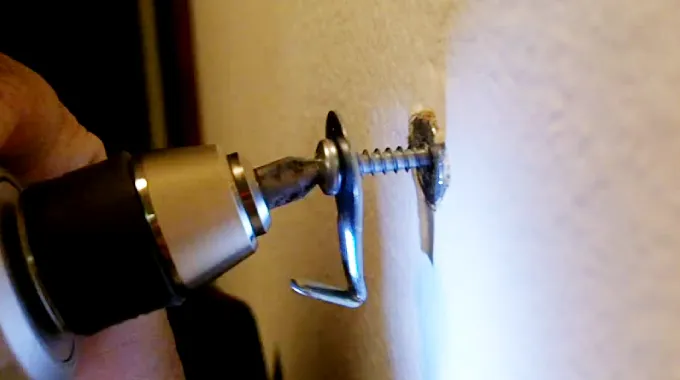Last Updated on March 13, 2023
An important component of any home construction project is the use of drywall anchors and studs. Drywall anchors provide extra security for heavier items hanging on the wall, while studs play a big part in ensuring your walls stay strong. Even with all that support going on, you may be left wondering, do you really need both?
If you’re hanging something on the wall, drywall anchors can help ensure it stays put. But lucky you if there is a stud directly behind your object’s location, you might just get away with using nails or screws and not need an anchor.
Then again, there are certain instances where an anchor is necessary for safety and support reasons. This blog post takes an in-depth look at the details behind these sometimes controversial fixings.
Do You Need Drywall Anchors for Studs: In Details
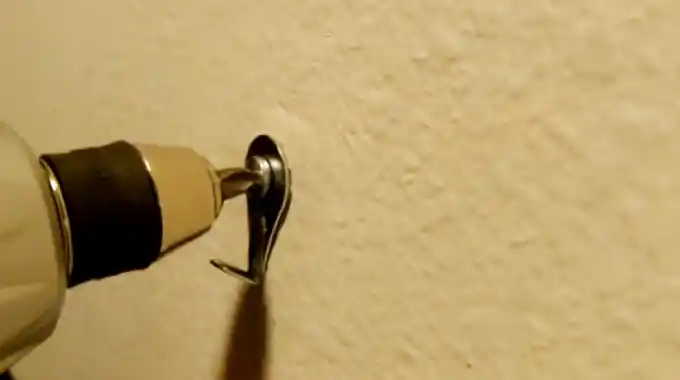
You may already know the answer to this question is a resounding no. A stud can be directly behind the wall, providing more than enough support for whatever you need to hang. The strength and rigidity of a stud are far greater than any drywall anchor, meaning that it can hold objects much heavier than what you would be able to hang with an anchor alone.
Still, this doesn’t mean that drywall anchors are never necessary. When hanging items on walls without studs, such as large pieces of artwork or fixtures like shelves or cabinets, drywall anchors can offer the support needed. So these items don’t come crashing down within days or weeks of installation.
Aside from that, if you’re just hanging something relatively light, like a picture frame or wall decor, drywall anchors provide support.
When deciding whether to use drywall anchors for studs or not, it’s essential to consider exactly what type of object you need to hang and how much weight it will exert on the wall. With heavy objects like shelves and cabinets, it’s always best practice to locate a stud and use that as your primary source of support.
But, if you don’t have access to one or are short on time and resources, then a drywall anchor may provide sufficient support and save you time on installation.
Whichever decision is made regarding the use of drywall anchors in relation to studs should also be considered from a safety point of view. After all, these products were designed with safety in mind. They will help prevent accidents caused by falling objects due to insufficient mounting hardware if used properly.
When Installing a Drywall Anchor & How Do You Know If a Stud Is Present?
When tackling any project that requires drywall, it’s essential to correctly identify the presence of a stud before you even think about installing an anchor. Here are a few easy ways to do this:
1. Using an Electronic Stud Finder
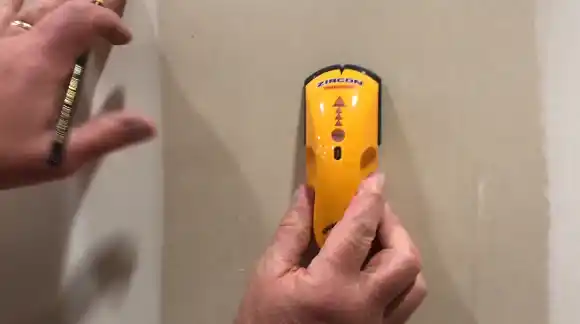
An electronic stud finder is the easiest way to locate studs before installing drywall anchors. This device utilizes a combination of magnets and vibration sensors that detect changes in the wall’s structure. It can detect differences in density, such as when there is a change from air space to wood or metal stud.
To use this tool, simply press it against the wall’s surface and move it until it identifies the location of a stud or other structural object behind the wall’s surface. When using this type of detector device, it is also essential to take note of any beeps or lights that indicate where a stud may be located.
2. Testing the Sound Quality By Knocking On the Wall
This method requires you to knock on the wall and listen for differences in sound quality between areas with and without studs. Areas that contain studs will produce lower sounds than those without them, making them easier to distinguish.
While not completely foolproof, this method has proven reasonably effective over time. Also, it may be necessary to check several areas where a stud might be located around each possible area. As they may not all produce identical sounds due to different levels of insulation being used within each wall cavity.
3. Measuring Distances Between Wall Fixtures
One technique used to determine if a stud is present when installing drywall anchors involves taking measurements between wall fixtures such as light switches, outlets, door frames, and windowsills. Typically, these fixtures are mounted on either side of the wooden support boards known as “studs.”
So these measurements can indicate their presence behind your walls. The standard distance between these fixtures tends to be several inches. If you measure this distance between two fixtures, then chances are that there will be a wood support board sandwiched in between them both.
4. Use a Claw Hammer and Screwdriver or Drill Bit
If all else fails, then one tried-and-true method for locating studs before installing drywall anchors involves using a screwdriver and drill bit combination tool set. Slowly insert your screwdriver/drill bit into different points along your wall at an angle (i.e., at about 45 degrees).
You can feel any resistance that might indicate that you’ve hit upon something solid like wood beneath your walls’ surface. Which would likely indicate the presence of a stud.
Are Drywall Anchors As Strong As Studs?
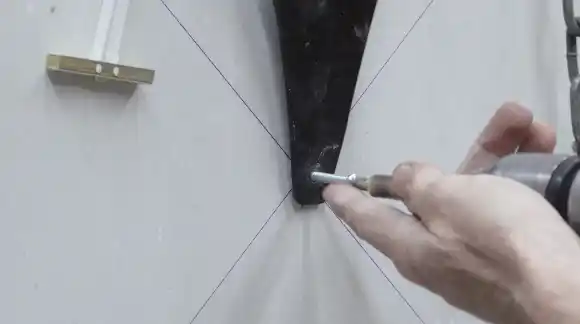
If you want to ensure your wall-mounted items stay firmly in place, studs are the way to go. Drywall anchors may be a quick and easy solution, but they don’t offer the same strength as actual structural beams inside walls.
This is because drywall anchors rely on friction to keep them in place, which can be affected by the type of material used, the size of the anchor, and how well it is installed. The level of support provided by drywall anchors can also be further reduced over time due to wear and tear from objects being placed on them.
On the other hand, studs provide a much more secure option since they are physically attached to the wall structure and will not move around or become weaker over time.
How Can You Hang Objects on Drywall Without Studs?
In the absence of studs, you can use wall anchors to hold heavier objects. Wall anchors are typically made of plastic or metal and come in various sizes and shapes. To install them, mark the spot where the anchor will go with a pencil, then use a drill to make a pilot hole for it.
Push the wall anchor into the pilot hole until it’s flush against the wall, and use a screwdriver to secure it in place. Once the anchor stays in place, you can hang objects such as shelves, mirrors, artwork, and more by screwing them into the anchor.
Without Studs or Anchors, How Much Weight Can Drywall Hold?
Without support such as anchored screws or nails placed into studs, most thin drywalls will be able to hold between 1.2 and 1.6 pounds per square foot before becoming damaged. Thicker drywalls will typically have higher load-bearing capabilities, with some types being able to handle up to 2.1 pounds per square foot without an anchor system installed.
Taking these estimates with a grain of salt is essential because specific factors like age and condition can affect how much weight drywall can hold. Hence, you need to be mindful of the maximum load capacity of your walls when placing heavier items into them without anchoring them into studs or using specialized support systems (e.g., metal straps).
Which Type of Drywall Anchors Are Ideal For Hanging Items On Drywall?
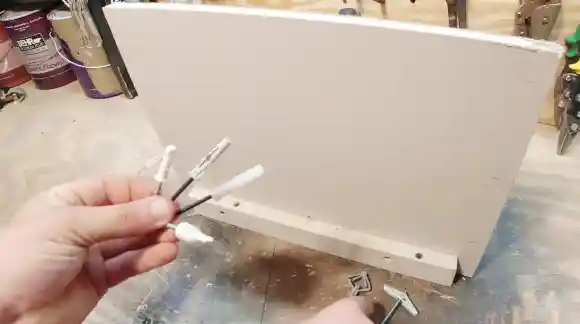
When selecting the right type of drywall anchor to hang items on drywall, there are a few key considerations to consider. The weight of the item you plan to hang will affect which type of anchor is best suited to support it.
There are a variety of drywall anchors available, such as toggle bolts, molly bolts, and plastic hollow wall anchors. A toggle bolt features wings that open up behind the wall when they are inserted. They are typically used for heavier items and provide an extra-secure hold.
A molly bolt features a metal sleeve that is driven into the wall to expand and grip the inside of the hole. These tend to be used for lighter items where less secure fastening is needed.
The plastic hollow wall anchor fits into pre-drilled holes in the drywall with a screwdriver or drill bit. This creates multi-directional pressure against the walls of the hole for additional support.
Here are some anchors you can use on drywall:
Heavy Duty Wall Anchors for Drywall
These anchors allow you to securely hold your wall fixtures in place, even in the most challenging of scenarios. The uniquely shaped wings expand when tightened, providing superior grip and support for heavier items. The set includes three different sizes – 1/8in, 3/16in, and 1/4in – giving you more control over the size of your project’s needs.
Crafted from high-grade steel, these wall anchors are strong and durable – never sacrificing quality for convenience. Plus, they’re multi-layered galvanized to protect against corrosion and rusting so that you can trust their performance for years to come.
Self-Drilling Anchor with Screw Kit
This Anchor with Screw Kit is the perfect solution for any project that demands secure and reliable anchoring without the need for drilling. This kit comes with an anchor made of durable carbon steel and a tapered tip for effortless installation.
The zinc plating on the anchor ensures maximum strength to handle up to 66 pounds. Simply use a screwdriver to install this anchor.
Professional Wall Anchors and Screws for Drywall
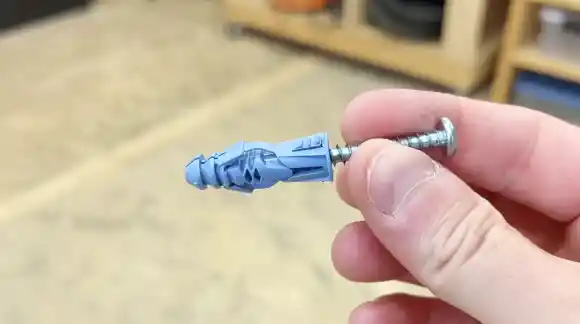
Using this Wall Anchor, you can securely hang items on drywall. Crafted from a high-quality hard nylon plastic anchor and designed to be suitable for most materials, these wall anchors and screws are sure to provide superior strength and stability.
With a weight capacity of up to 75 LBS, this anchor system can support a variety of heavy items without any worry of damage or destruction.
Decide If Drywall Anchors are Right for Your Stud Installation
Ultimately, you should decide whether or not you need to use drywall anchors for studs before attempting any installation. If you want to hang something substantial, ensure you know what’s behind the wall. When there’s a stud present, it makes sense to use that for support.
But when things get tricky, drywall anchors are your lifeline. Knowing which route is best will keep everything safe and secure in its place. It’s always essential to use top-notch materials for any kind of wall installation if you want it done right. Choose quality drywall anchors carefully so that you achieve the best outcome for your project.
